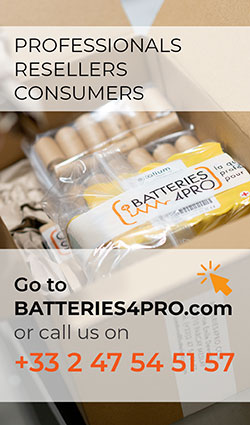- Medical catalog
- Industrial catalog
By manufacturer
Users recommendationsCELLS & BATTERIES GOOD USE
Batteries must be handled with care, stored and disposed of. The recommendation sheets below tell you the safety rules to follow in order to use the products safely and keep them in working order for a long time.
Before commissioning, the end user must check the compatibility of the Battery with their device. VLAD declines all responsibility in the event of non-compliance with these recommendations.
DOWNLOAD USERS RECOMMENDATIONS


































